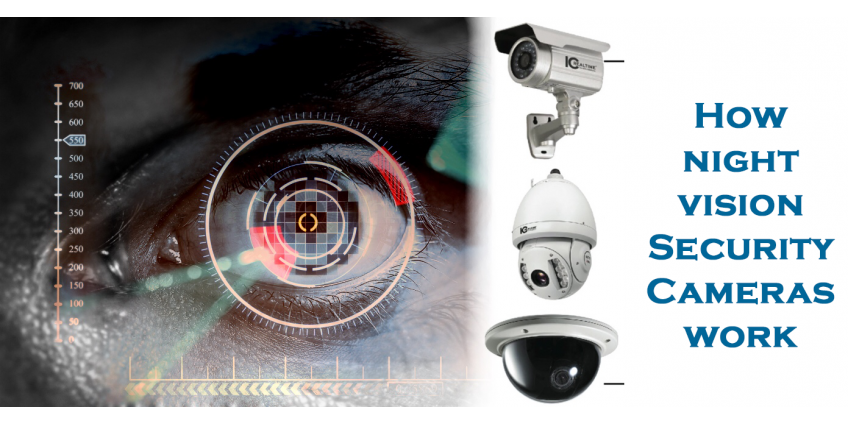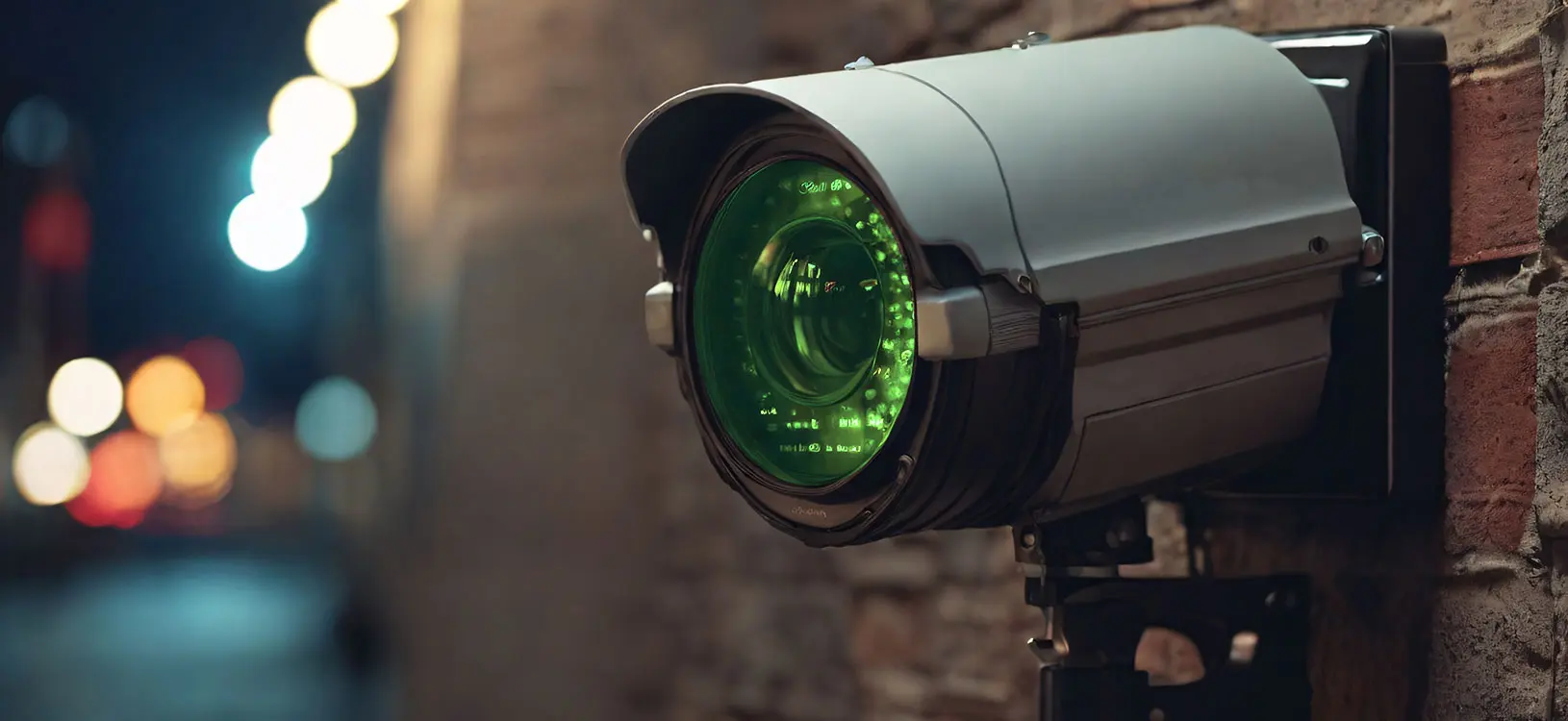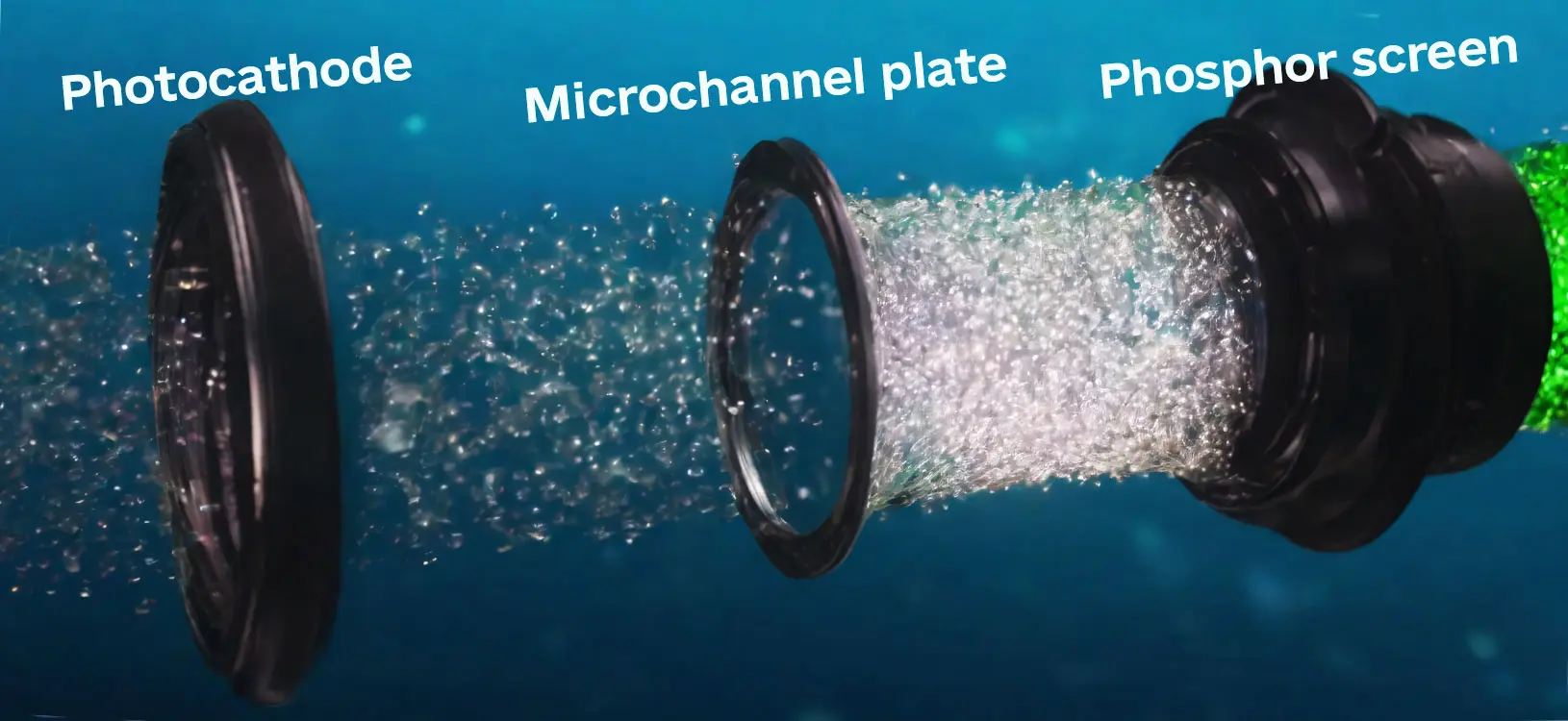
This product is not exportable outside the United States.
By adding this item to cart, you agree and acknowledge the Export Policy and confirm that you are a person in the United States with no intentions to illegally export the device.
This product is not exportable outside the United States.
By adding this item to cart, you agree and acknowledge the Export Policy and confirm that you are a person in the United States with no intentions to illegally export the device.


0

0


The world changed immediately after night vision cameras became available to people. They opened up new horizons for us and allowed us to perform various tasks at any time of the day. Modern models of these devices are in demand everywhere, and it is difficult to find a good alternative to them. Therefore, let's take a closer look at the principle of their operation and the features of the image capture and formation technologies used for this.
The most valuable optics are cameras that perform effectively in low-light conditions. They work in almost all situations and allow users to complete dozens of tasks of varying complexity. Thanks to the new night vision technologies, it is possible to eliminate any visual defects and achieve high image quality. Such cameras are an excellent alternative to monoculars, binoculars and night vision goggles. They have more comprehensive functionality and cope with tasks no worse than the listed devices.
Among all night vision devices, cameras are the most popular. They help monitor and record video under any light conditions. This makes them in demand among police officers, security guards, rescuers and representatives of other professions. Cameras for the night are no less popular among hunters, fishermen and ordinary videographers. Despite the many applications for devices, most often, they can be considered as the primary means of night video surveillance. Thanks to their ability to create clear images in any situation, it is possible to identify offenders, record the actions of criminals, and quickly identify attempts to penetrate secret facilities or private territory. Often, it is thanks to such cameras that people can feel completely safe and enjoy life.

The critical difference between the types of optics under consideration is their operating principle. NV cameras collect and enhance the intensity of available light, while IR-illuminated models capture infrared radiation emitted by objects that radiate heat. Thanks to these features, the first type of device is ideal for cloudless nights and places without light. At the same time, IR devices become indispensable in dark conditions.
Models with night vision guarantee good picture quality. They allow everyone to identify objects and look at small details. At the same time, thermal cameras form an image based on the detected heat signatures of the object. This allows you to get a unique image in which a specific color corresponds to a particular temperature range. Another critical difference is the ability of infrared thermal imaging cameras to detect thermal radiation emanating from objects through various obstacles. Sensitive sensors can detect any minimal infrared light and form a quality picture. At the same time, NV cameras allow you to observe only those objects that fall within the area visible to the device.
Night vision security cameras are optics that can have two different operating principles. The first is optoelectronic, and the second is digital image enhancement. Both methods of obtaining the final picture are quite simple to learn, so let's look at each in turn.
Almost all classic cameras, binoculars, monoculars, and night vision goggles are based on the optoelectronic enhancement method. It uses a unique image intensifier and several optical lenses. The operating principle of such a camera is conventionally divided into five key stages. In the first, the optics lens collects all visible light. It then passes through the lenses to the image intensifier. The latter is a device in which photons are converted into electrons and amplified many times using a microchannel plate. At the next conversion stage, the amplified electrons fall on a particular screen with a phosphor coating. The result is an image that becomes brighter and more contrasting several times than the original. The picture is displayed, and the user sees what is happening in the dark.

Cameras using an optical-electronic image enhancement system can efficiently cope with their tasks at any light level. The main thing is that when the night mode is turned on, some source of light radiation is available. This could be a bright object in the sky (star clusters, comets, the Moon, etc.), a street lamp or spotlight burning somewhere far from you, and much more. The generated image will never be multi-colored (primarily green, but sometimes there are filters of other colors), allowing you to see objects in detail. Modern models lack numerous defects that prevent the eyes from correctly perceiving the picture.
Unlike the standard type of night vision cameras, digital ones use a more straightforward principle of picture enhancement. This is most effective in dark conditions and almost always guarantees high definition, so digital enhancement is used in nearly all modern devices.
The whole process starts with the lens. It collects available light and sends it to a unique converter. The latter has in its design a CMOS sensor that converts the received information into a digital signal. This lasts only a few fractions of a second but is the most important in forming the final result. After conversion, the image is finalized by an electronic system. This stage allows you to increase sharpness and brightness and eliminate various defects. The created image is sent to the display where the user sees it.
The digital amplification method produces better results than the optoelectronic one. The generated image almost always has good detail and is as informative as possible. In addition, the digital amplification process is faster, eliminating any delays or stuttering when viewing fast-paced scenes. Another advantage of digital amplification is the ability to use additional functionality. It allows you to adapt the camera's operation to the individual needs of each user.
Security cameras use infrared night vision, which relies on IR light to function. It is entirely invisible to the naked eye, so it does not unmask the user and does not interfere with other people performing various actions simultaneously. To understand this better, think about your current TV remote. It has a red LED on the front of the device and sends an infrared signal to your TV. You cannot see this beam transmitted to the TV in the infrared focal plane. The same can be said for IR illuminators or flashlights. These devices are usually mounted on the camera and emit an infrared light that allows you to capture images/videos and view them in complete darkness. Manufacturers have begun to equip most modern security cameras with built-in infrared LEDs, providing night vision in low-light conditions. In addition, they are effective in complete darkness, which makes them indispensable assistants for representatives of many professions.
Most security cameras released today with night vision capabilities will also come with an IR cut filter. It is a mechanical shutter between the camera lens and the image sensor. This filter automatically detects ambient light (natural or artificial) and applies an IR-blocking filter throughout the day to preserve the image and clarity of daylight. The light sensor on the surveillance camera controls the IR cut filter. At dusk, it simply sends a removal signal to the IR cut filter so that more light can reach the security camera's image sensor. This allows more light to come through, including IR light from the camera. Typically, all digital infrared cameras display a black-and-white image in night vision mode rather than the green tint popularized by the color phosphor of analog night vision systems.
Low-light night vision is based on amplification technology that provides color night vision images in very low-light conditions. When ambient light falls on a charged photocathode plate, electrons are emitted through a vacuum tube that hits the microchannel plate, resulting in an image appearing on the screen in the same pattern as the light incident on the photocathode and at a frequency that the human eye can see. Most existing analog systems today can display images in green or black and white. The specific option depends on the type of image intensifier used (green or white phosphorus). Because this technology uses optical viewing rather than a digital amplifier, the clarity and resolution of analog devices are usually much higher than digital devices. The difference in this indicator is insignificant, but it is still observed. This will be especially important in cases where you need to see small details of an object in the dark.
People who use such cameras should always remember one important detail. Due to the tube's photosensitivity, there is a high risk of damage from bright light. In this regard, it is necessary to use special filters or take additional precautions. Otherwise, light coming from the sun, nearby spotlights, car headlights and other objects may damage the tube and make it impossible to use the night vision camera further.

Thermal cameras available today, models with classic night vision, are universal devices that can cope with their tasks in any environmental conditions. All of them may have different principles of operation, but, ultimately, their use gives the result that the user needs. Each such device is perfect for video surveillance. In this case, the cameras guarantee excellent image quality and increase the chance of seeing all the details. There are several key technologies in the advancement of security cameras. Primarily, the advancement of digital and analog components allows for the day/night operation of night vision cameras. Due to technological variances, it is essential to point out that Digital night vision will be the cheapest and most budget-friendly device mentioned above. In contrast, analog night vision will provide a higher price point due to the costs involving the image intensifier tubes and overall higher clarity and resolution. As technology expands and devices become more compact and cheaper for the overall market, the trend of more powerful, technological and capable devices will become more prevalent.
Yes, cameras can work even in complete darkness, but they must use infrared night vision technology for this.
No, night vision technologies can use infrared radiation to form images, but this is not done in all cases.
No, the phone camera does not have night vision. However, some smartphones may have a night mode, which uses special software to process photos taken in low visibility conditions.
The exact value depends on many factors, from the camera's characteristics to the current lighting conditions. However, on average, this figure varies between 100 and 200 feet.
Modified: May 29, 2024 | 02:40 pm
Table of contents
Featured Articles
Most people have seen night vision technology in movies but don't know how it work’s. In this article, we are going to tell you who, where and why nig..
Night vision vs. thermal optics: what you need to know. A brief description of both technologies and their positive and negative qualities. The main d..
Night Vision Devices are a serious investment. Following these simple rules can protect it (and you) from harm while allowing you to enjoy all of the ..
Know more about night vision and principles of its work with www.agmglobalvision.com..
Night Vision technology has developed significantly since first introduced 75 yrs ago, the article below highlights some of these breakthroughs as wel..